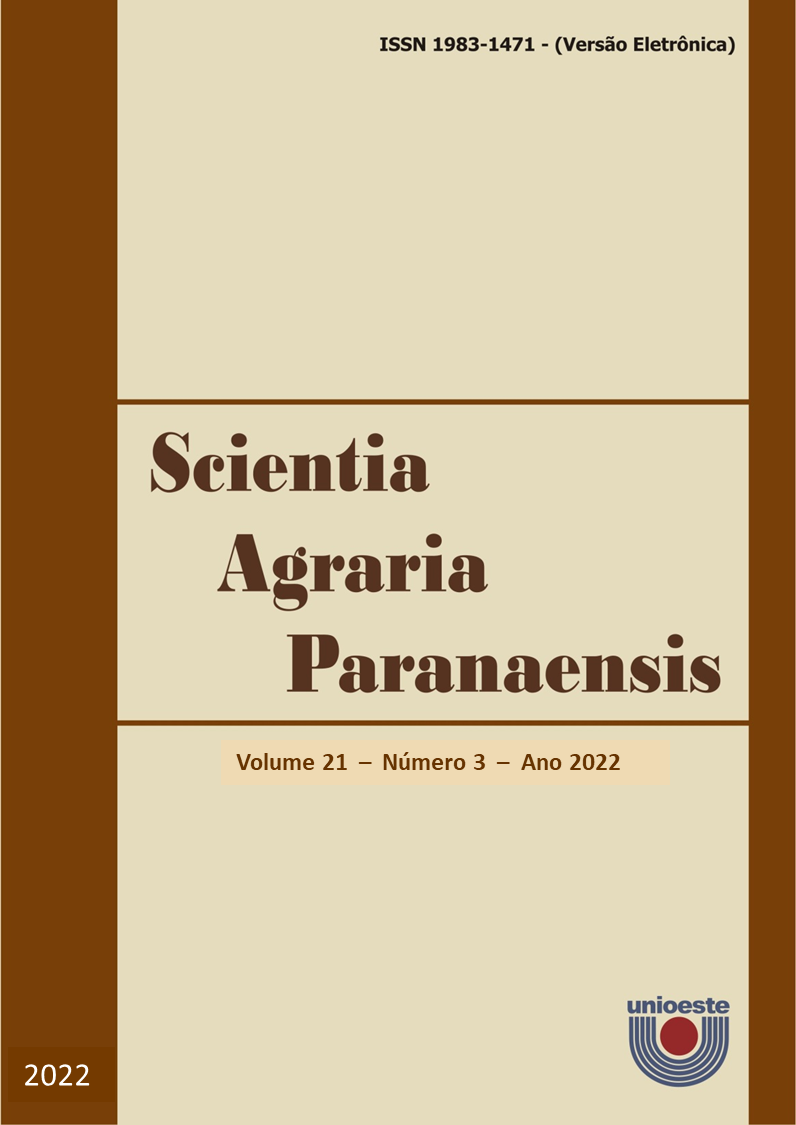Performance and morfhometric characteristics of Santa Inês sheep and Texel x Santa Inês lambs on pasture
DOI:
https://doi.org/10.18188/sap.v21i3.29868Resumo
Brazilian sheep farming has been gaining prominence with the increase in meat production, seeking more efficiency and profitability. Thus, the creation of the Santa Inês breed has stood out, as it is highly adaptable to different types of environments and has potential for meat production. The objective of this study was to evaluate the performance characteristics of the morphometric sheep of the Santa Inês breed, recently-Paris, with their respective lamb Texel x Santa Inês, a paste, in creep feeding system. For this purpose, 30 Sheeps and theirs and the respective lamb were used for natural breastfeeding for 60 days until weaning. The randomized blocks used, with two treatments (absence of the presence of the private feeder), with 10 repetitions, being shadow sheep by repetition municipality or relative lamb. In studies on the termination of two lambs, the bone of heavy animals was measured at the beginning and at the end of the experiments (25 days), using the 30-lambs weaned. The randomized blocks, used with three treatments (0, 400 and 800 g of concentrate/lamb/day). There was no difference in weight between the sheep outside of lamb (supplemented or not). There were no two treatments effect on the morphometric characteristics among the sheep outside between the lamb bone. The use of creep feeding to supplement lambs kept on natural lactation does not provide weight gain in sheep, nor does it provide weight gain in supplemented lambs. Lamb supplementation does not influence the morphometric characteristics of ewes and lambs during lactation. Private supplementation during breastfeeding does not increase lambs’ weight gain until weaning, but food supplementation, via creep feeding with 400 g/animal/day, in the finishing phase presents the best results for weight gain.
Downloads
Publicado
Como Citar
Edição
Seção
Licença
Aviso de Direito Autoral Creative Commons
Política para Periódicos de Acesso Livre
Autores que publicam nesta revista concordam com os seguintes termos:
1. Autores mantém os direitos autorais e concedem à revista o direito de primeira publicação, com o trabalho simultaneamente licenciado sob a Licença Creative Commons Attribution que permite o compartilhamento do trabalho com reconhecimento da autoria e publicação inicial nesta revista.2. Autores têm autorização para assumir contratos adicionais separadamente, para distribuição não-exclusiva da versão do trabalho publicada nesta revista (ex.: publicar em repositório institucional ou como capítulo de livro), com reconhecimento de autoria e publicação inicial nesta revista.
3. Autores têm permissão e são estimulados a publicar e distribuir seu trabalho online (ex.: em repositórios institucionais ou na sua página pessoal) a qualquer ponto antes ou durante o processo editorial, já que isso pode gerar alterações produtivas, bem como aumentar o impacto e a citação do trabalho publicado (Veja O Efeito do Acesso Livre).
Licença Creative Commons
Esta obra está licenciada com uma Licença Creative Commons Atribuição-NãoComercial-CompartilhaIgual 4.0 Internacional, o que permite compartilhar, copiar, distribuir, exibir, reproduzir, a totalidade ou partes desde que não tenha objetivo comercial e sejam citados os autores e a fonte.


